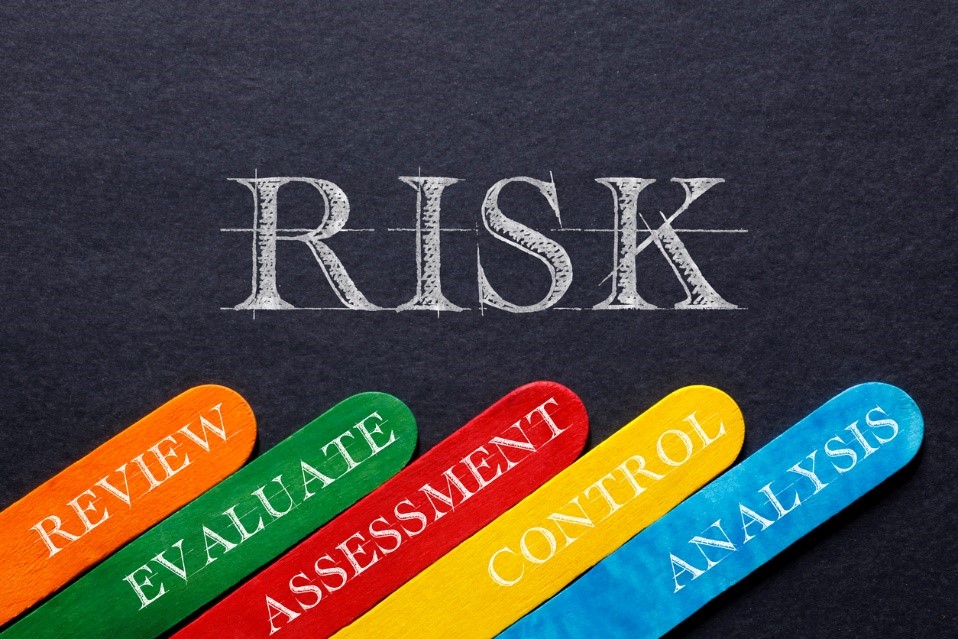What are the major risk types and what do they mean?
Risk management is a crucial component of running a homeowners association (HOA). HOA boards often work with property management companies to ensure that the HOA is in compliance with laws and regulations, but also to ensure that homeowners’ investments, and the community as a whole, are protected from accidental losses.
First, it’s important to understand the biggest risks facing HOAs and their management companies, and what those entail; then, how community boards can ensure that they are fully protecting the HOA from loss with adequate insurance coverage and risk-management principles.
Categories of risk, explained
The biggest risks facing HOA boards, according to the Community Associations Institute (CAI), fall under these categories:
- Property
- Liability
- Net income
- Personnel
Property
Property loss can occur when a natural disaster, like a flood or hurricane, results in damage to the property, or when events such as neglect, pollution, or theft impacts a property. Other property-related risks, whether impacting physical property or intellectual property, are:
- Hackers or viruses
- Market fluctuations
- Increased construction costs
- Strikes
- New technology
Liability
Liability is another big risk category for community associations and businesses in general. For HOA boards, loss from liability occurs when a legal requirement is breached or when negligence results in harm or an injury.
HOAs also work with third-party vendors, such as builders or landscapers, which can open the community up to additional liabilities. Ensuring that vendors meet necessary compliance requirements, such as liability insurance, is important for minimizing risk when working with these third parties.
Income
Risk of income loss typically centers around cash flow, and losses can occur if there is a decrease in revenues or an increase in expenses, or both.
When HOAs attempt to self-manage, they may have financial security issues that could be mitigated with a property management company.
Personnel
Personnel loss may occur when someone key to the functioning of the HOA dies, becomes disabled, retires, or resigns, including volunteers within the community or employees. The loss of personnel can expose the HOA to risks; for example, if a worker is injured and makes a workers’ compensation claim.
Another personnel risk relates to conflicts between the HOA and its members that may arise. One of the most common disputes is when community members break HOA rules. Familiarity with the HOA’s governing documents, including the Covenants, Conditions, and Restrictions (CC&Rs), is a must for board members so violations or conflicts can be addressed reasonably and within the bounds of the HOA’s requirements.
How to create an effective risk-management program
Once risks are identified, HOA boards and management companies must address them through well-defined policies and procedures. Two components make up a good risk-management protocol: risk control, which helps eliminate or minimize losses, and risk financing, which addresses necessary funding for losses.
While both risk control and risk financing are necessary, they should be evaluated together as one, as the CAI points out, to have a successful risk-management program in place.
are necessary, they should be evaluated together as one, as the CAI points out, to have a successful risk-management program in place.
Insurance coverage and claims
The first step is to ensure that the association is covered under a comprehensive insurance program, and to implement a claims administration program. This means a member or members of the board need to be aware of the risks and be able to understand the insurance claims process. Each loss an association may experience has its own specific claims process, so familiarity with each insurance contract is a must.
Monitoring the program
Once risk-management policies are in place, it’s the HOA board’s responsibility to implement the program and continue to monitor policies to ensure they are effective and are being followed. As with any management program a business implements, policies will need to be reviewed and adjusted regularly.
Hiring policies
HOA boards also need to ensure that employees or temporary third-party vendors are thoroughly vetted before being hired. As previously mentioned, this includes making sure vendors hold necessary insurance to protect the HOA should an incident occur. It’s also important to check on licensure of vendors and contact any references, previous clients, or employers.
Working with outside professionals
Because running a community association requires knowledge of and compliance with laws and statutes, it’s important to discuss these issues with professionals, such as community management companies, accountants, attorneys, or compliance specialists, to ensure the HOA is following all necessary regulations. At VendorSmart℠, HOA boards work with professional analysts who are experienced in compliance and risk management. The team ensures that compliance documents are safe and secure in the VendorSmart℠ system, and management companies can access them at any time.
